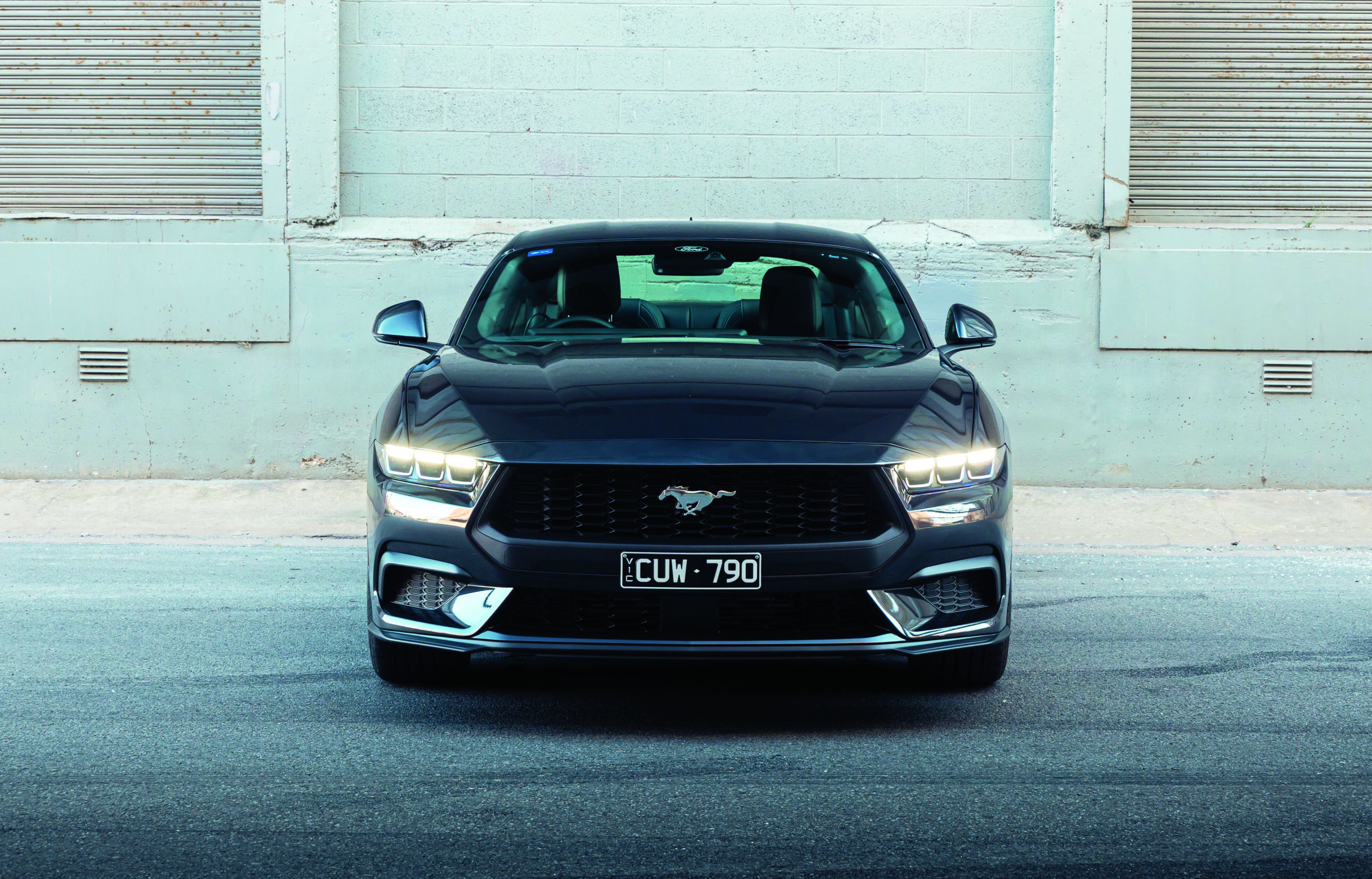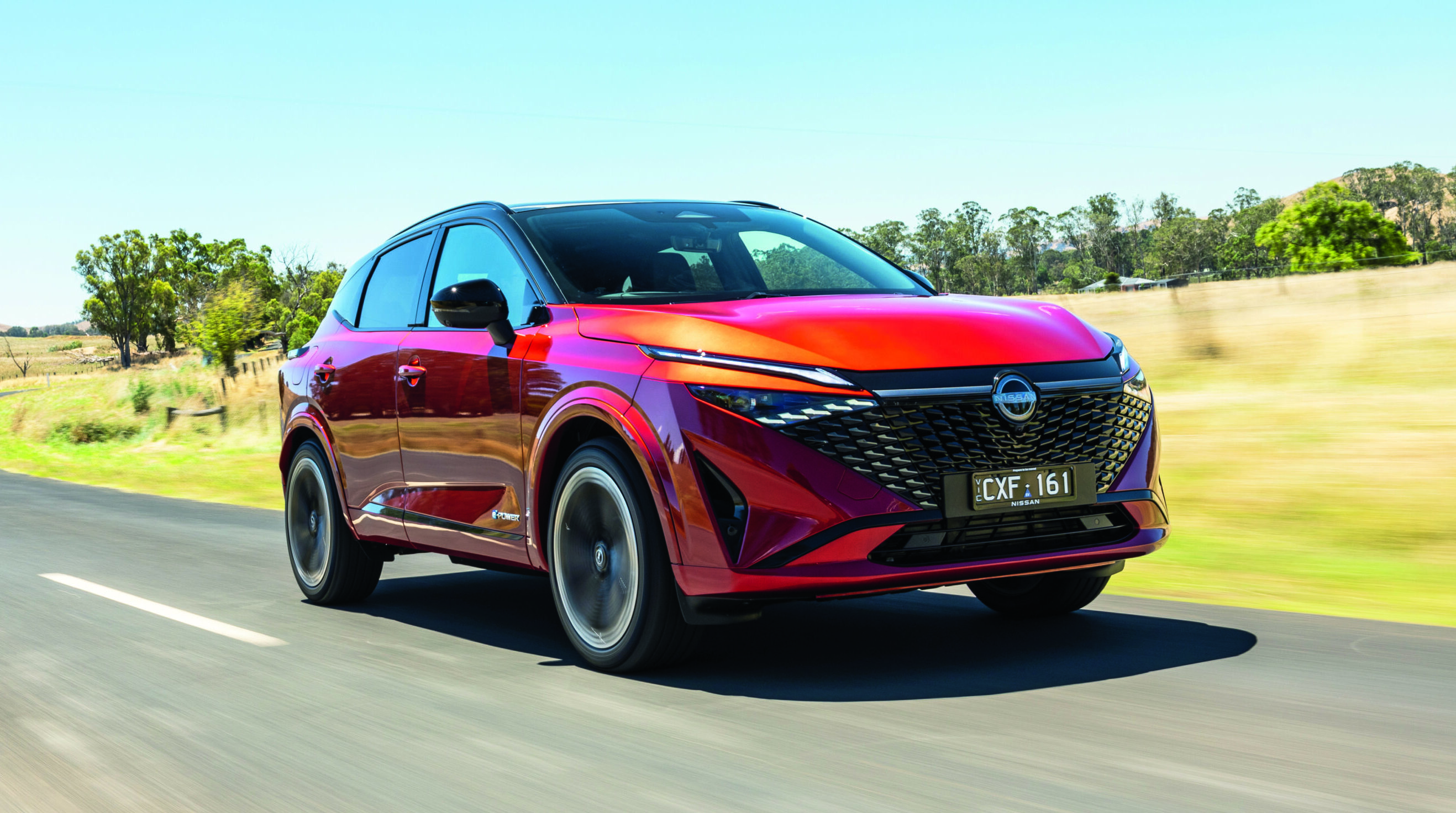There is nothing quite as menacing as the face of a street-legal race car appearing in your rear-view mirror.
Halfway through a lap of Portugal’s fearsome Portimao circuit, between the Torre and Alonso corners, to be precise, I catch a glimpse of the angry grille of the new Mercedes-AMG GT R. Inspired by the 300SL Panamericana, it’s an aggressive sight, with 15 vertical chrome teeth and piercing LED eyebrows giving it a visage of pure evil.
The intimidation factor is ratcheted up a few notches by being sandwiched between two pros. Steering the lead car is former DTM champion Bernd Schneider, while the man filling my mirrors is Cristian Gebhardt, the driving wizard from Germany’s Sport Auto who set the staggering 7min10.9sec GT R Nurburgring lap time.
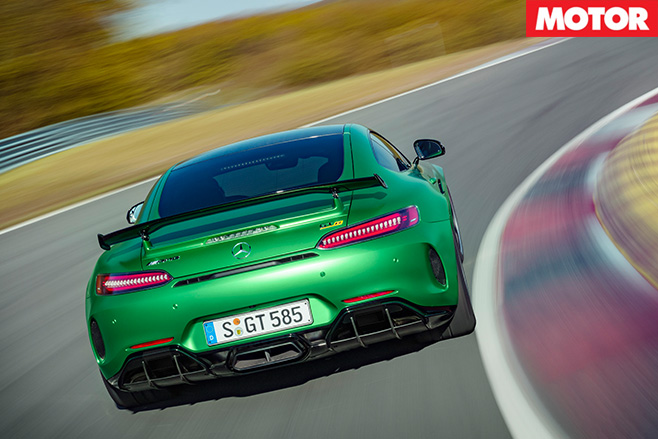
Prior to embarking on our hot laps, AMG’s new flagship signalled its focus with the need to manually adjust the carbonfibre seat. As ever with the GT, cabin space is tight and these new lightweight buckets add to the squeeze, while some of the plush niceties of the GT S are conspicuous in their absence.
Schneider offers some tips on extracting the best from this beast: “Put the drive-mode selector into Race. Now switch off ESP altogether. See the display between the speedo and the rev counter? It shows the traction control setting.
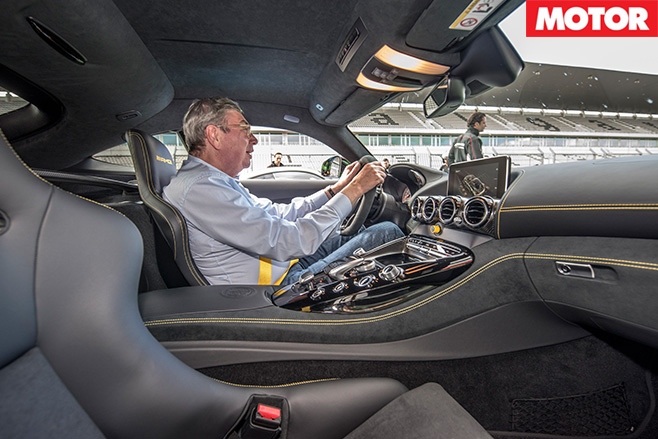
As well as a choice of four driving modes, three damper settings and three ESP modes, with the electronic nanny deactivated the GT R offers nine different traction control settings, with the ability to transform the handling characteristics from safe and placid to manic animal.
A challenging mix of slow and fast corners, gradient changes and blind crests, Portimao makes for a memorable driving experience. With every lap my confidence grows, but while the two professional racing drivers accompanying me do a wonderful job of taking the GT R to its limits, those of us with two left feet and an impatient temperament find it all too easy to find the AMG’s electronically-defined ragged edge, killing momentum in the process.
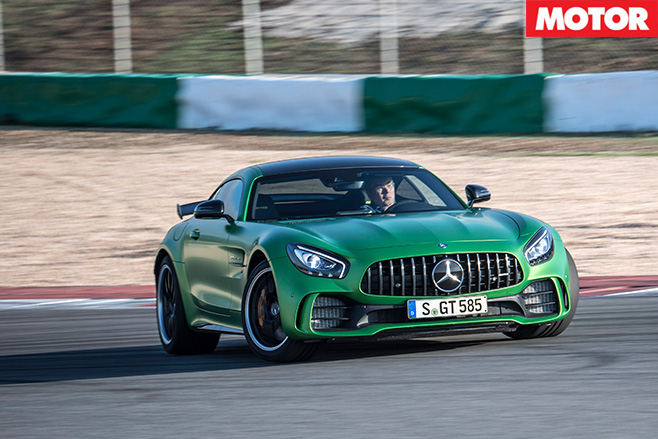
Despite weight saving measures such as aluminium suspension components, carbonfibre front guards, roof and propshaft, magnesium front deck and titanium exhaust system, at 1555kg the GT R is only 15kg lighter than the GT S thanks to the addition of active aerodynamics, wider wheels and tyres and all-wheel steering.
The variable-rate steering system is an intriguing and interesting setup. The weighting is much meatier than the GT S, but depending on speed, mode and lateral acceleration, driver input has complex consequences.

As a result, the latest sports car from Affalterbach is fitter than ever, more focused, sharper and ultimately faster than its lesser brethren. On the track the active aerodynamics boost high-speed stability, replacing traditional rubber bushings with uniball joints ensures instant response and the optional carbon-ceramic brakes are worth their weight in gold, matching the colour of the calipers.
Away from the circuit, this focus does force some compromises; even with the systems at their cushiest, compliance is not exactly a GT R strong suit. On the deserted highways from Portimao to the coast at Lagos it takes total concentration to hold the car at speed.
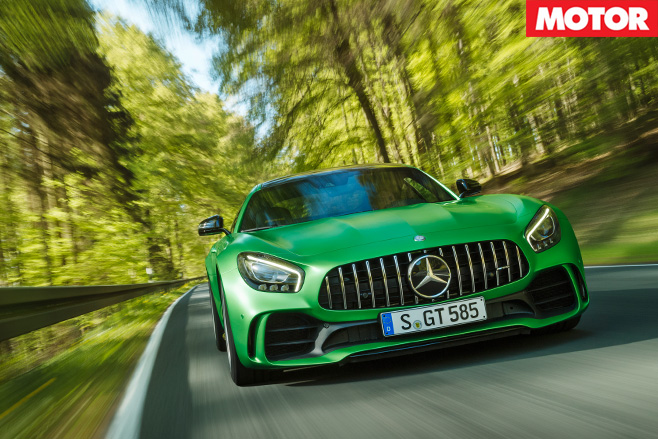
Regardless of the venue, however, the GT R’s straight-line pace never fails to make a dramatic impression. With the 6.2-litre naturally-aspirated V8 an increasingly distant memory, AMG is now concentrating all its efforts on the new 4.0-litre twin-turbo V8, with the turbos nestled between the cylinder banks in a ‘hot vee’.
In R guise an increase of boost pressure from 1.2 to 1.35bar (17 to 20psi) results in 430kW/700Nm, increases of 55kW/50Nm over the S. Combined with revised ratios for the seven-speed dual-clutch transaxle – a longer first gear and shorter ratios in sixth and seventh – the 0-100km/h sprint takes 3.6sec while top speed is pegged at a convenient 320km/h (199mph), presumably to leave the 200mph-plus trophy tucked away for the forthcoming Black Series.
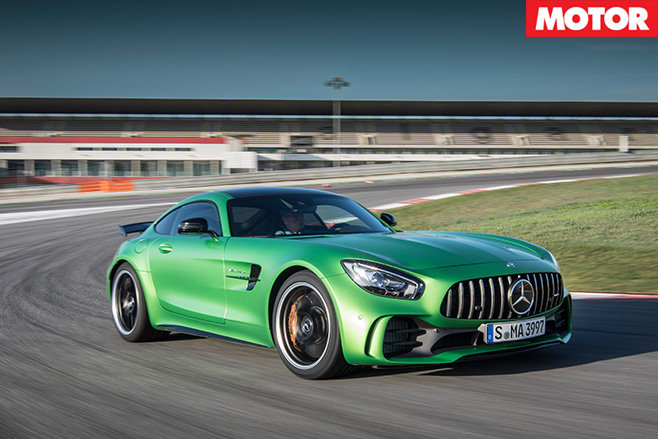
With the drivetrain locked in Sport, the urge to reach for the shift paddles is palpable, but on road and track with the selector set to Race the gearbox’s electronic brain proves better qualified than this driver to time up and downshifts to perfection. It’s ability to select the perfect ratio at the perfect time is uncanny, like it has eyes that scan the road ahead and act accordingly.
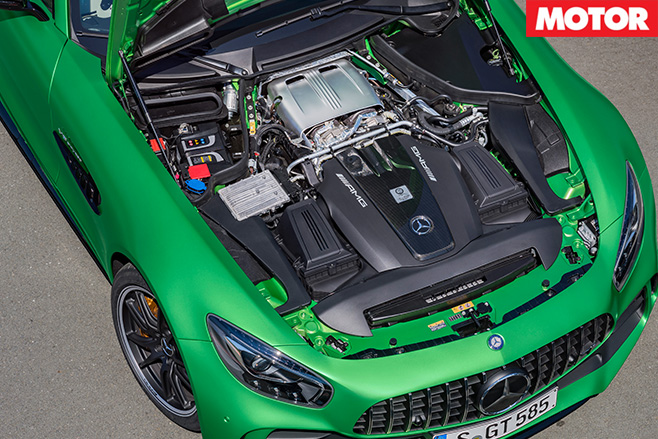
Its closest challenger, in concept and price, is likely to be Porsche’s next-gen GT3 RS. But while money is not likely to be a concern to many GT R buyers – local demand already outstrips supply – it is debatable whether the R is actually worth the extra coin.
The level of modification over the regular GT S is impressive, but a forthcoming GT C coupe, due in 2018, will boast 410kW/680Nm, as well as scoring the brawnier body and rear-wheel steering at a reasonable discount. For those in the market for a brawny V8 two-seater, I would either save a chunk of cash and buy the upcoming GT C, or hold off raiding the piggy bank for a little while longer and order the limited-edition Black Series.




